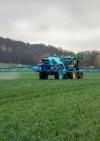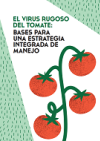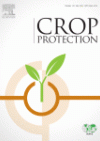Media library
Documentary, graphic and/or audiovisual knowledge objects are offered here, offering information on various sectors and topics. Use the keyword search or search filters to access current audiovisual and documentary knowledge objects useful for your implementation.
If you have any questions or suggestions, please contact us here.

Phytosanitary strategies in tomato
Strategies for the use of phytosanitary products in tomte cultivation

Tomato rugose virus: bases for an integrated management strategy
Document with information on epidemiological aspects—such as plant infection, virus spread, alternative hosts, virus persistence in the environment, etc.—that are essential for understanding and framing.

Pyricularia oryzae control strategies in the Calasparra rice plantation. Results obtained from the GO ArrozINNOVA project.
Results obtained in the GO ArrozINNOVA Project

Meetings of the Working Group on Experimentation in Viticulture and Oenology
Compilation of research on Viticulture and Oenology from the Working Group

Protection of grapevine pruning wounds against Phaeomoniella chlamydospora and Diplodia seriata using commercial biological and chemical methods
Article about Botryosphaeria dieback and esca, two of the most damaging grapevine trunk diseases (VTB) affecting vineyards in major grape-producing areas around the world.

Digital droplet PCR technology for the detection of Ilyonectria liriodendri in environmental samples of grapevines
Article about the accurate, early, and specific detection and quantification of blackleg fungi and the evaluation of droplet digital PCR and real-time PCR techniques.
Report A3: Map of stakeholders for climate change adaptation in the vineyard and wine sector
The overall objective of the VIN & ADAPT II project was to promote knowledge transfer and mobilize all stakeholders to drive adaptation to the challenges posed by climate change in the wine sector.
Climate change adaptation strategies for extensive livestock farming in Spain: a social perspective
Extensive livestock farming is a centuries-old activity throughout the Iberian Peninsula. Beyond being an economic sector within the agricultural sector, this activity provides society as a whole with key ecosystem services, including food provision, ecosystem regulation, the provision of cultural goods, the shaping of rural and mountainous landscapes, and fire prevention in forested areas.
Effects and adaptation of the vineyard to climate change
Climate change is the other major uncertainty for the wine sector. Currently available climate projections indicate that if greenhouse gas emissions continue at their current rate, there could be rising temperatures and decreased rainfall in the Iberian Peninsula, along with an increase in extreme weather events such as droughts and heat waves.
Avian Influenza Biosecurity Standards
Basic biosecurity standards for the prevention of avian influenza
Surveillance and control program for Salmonella serotypes of public health importance in poultry farms in Andalusia
Salmonellosis is a disease of humans and animals caused by microorganisms of the Salmonella genus belonging to the Enterobacteriaceae family. This family is composed of many serotypes. Not all serotypes are important in animal health, as some do not cause disease in animals. However, they are important in public health because they are the cause of one of the main foodborne illnesses.
Newcastle Disease Surveillance Program in Domestic Poultry 2024
Newcastle disease virus (NDV) belongs to the Paramyxoviridae family in the Avulavirus genus. There are ten avian paramyxovirus serotypes designated APMV-1 to APMV-10, and the Newcastle disease virus has been designated APMV-1.
Avian Influence Surveillance Program in Domestic Poultry
Avian influenza (AI) is a highly contagious and extremely variable infection of poultry and wild birds, the latter acting as a natural reservoir. Disease can range from moderate to severe, but only the H5 or H7 subtypes cause Highly Pathogenic Avian Influenza (HPAI), the most severe strain. These are extremely contagious and virulent strains, causing high mortality in poultry.
Avian flu: information brochure
Avian influenza (bird flu) is a disease caused by a virus that can affect most birds, both domestic and wild. This virus can also cause illness in humans. In 2003, an outbreak began in Southeast Asia and has gradually spread to other parts of that continent, as well as to Europe and Africa.
Health Surveillance Program for Pigs
The Spanish pig sector is the main livestock sector in our country, and is among the leading producers in Europe and worldwide. Its stability depends largely, and increasingly each year, on the level of exports of live animals and their products to other Member States and third countries.
Aujeszky's disease. Disease control and epidemiological situation.
Aujeszky's disease, also known as swine pseudorabies, is an infectious disease caused by a herpesvirus that infects the central nervous system and other organs, such as the respiratory tract, in many mammals (such as dogs, cats, cattle, rabbits, foxes, minks, etc.) except in humans and tailless monkeys, with the pig species being particularly important from a health and economic point of v
Contingency plan for suspected and confirmed sheep and goat pox in Andalusia
Sheep and goat pox is an infectious disease caused by a DNA virus belonging to the Capripoxvirus genus within the Poxviridae family. It produces a clinical picture in sheep and goats characterized by the appearance of fever, generalized nodules and papules, rarely vesicles, internal lesions particularly in the lungs, and, ultimately, death.
Manual on national plans for the eradication of animal diseases in Andalusia
Manual for the eradication of ruminant diseases
Caprine tuberculosis control program
Tuberculosis is a chronic, contagious, infectious disease that suppresses the immune system, leading to the onset of other illnesses, loss of production, and trade restrictions, including restrictions on participation in auctions and competitions. It affects all domestic animals, some wild animals, and humans, and is therefore classified as a zoonosis.
Swine Biosecurity Triptych
Decalogue of biosecurity in pig farms



